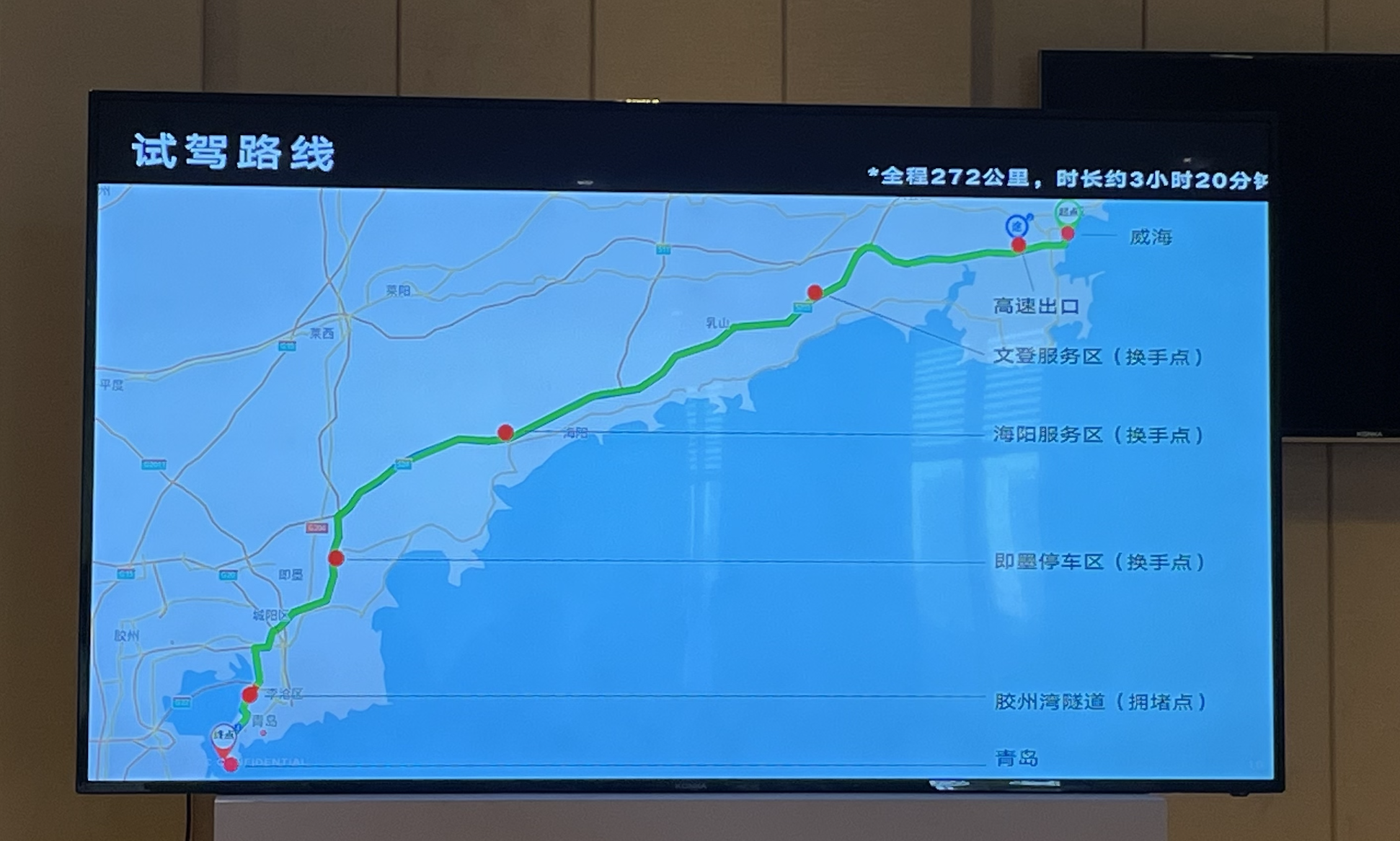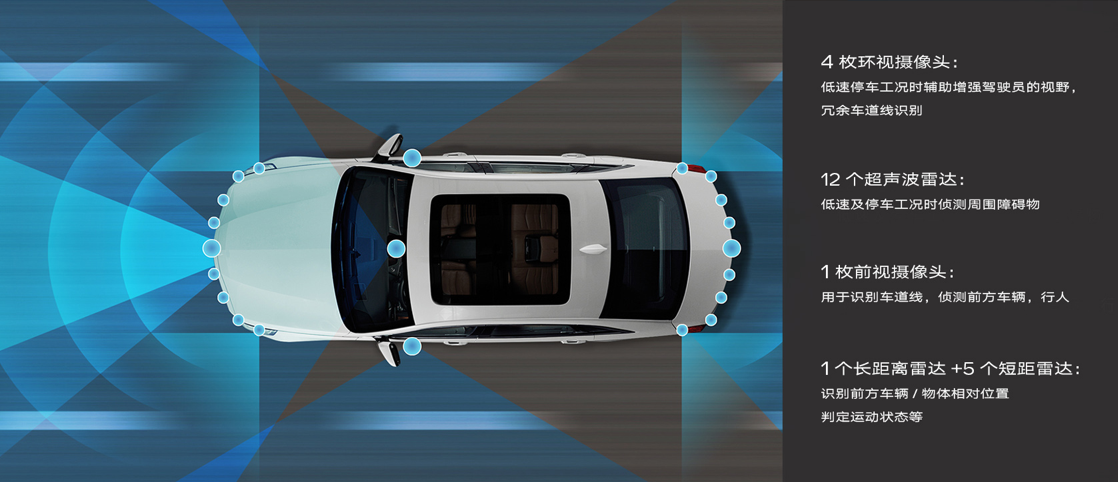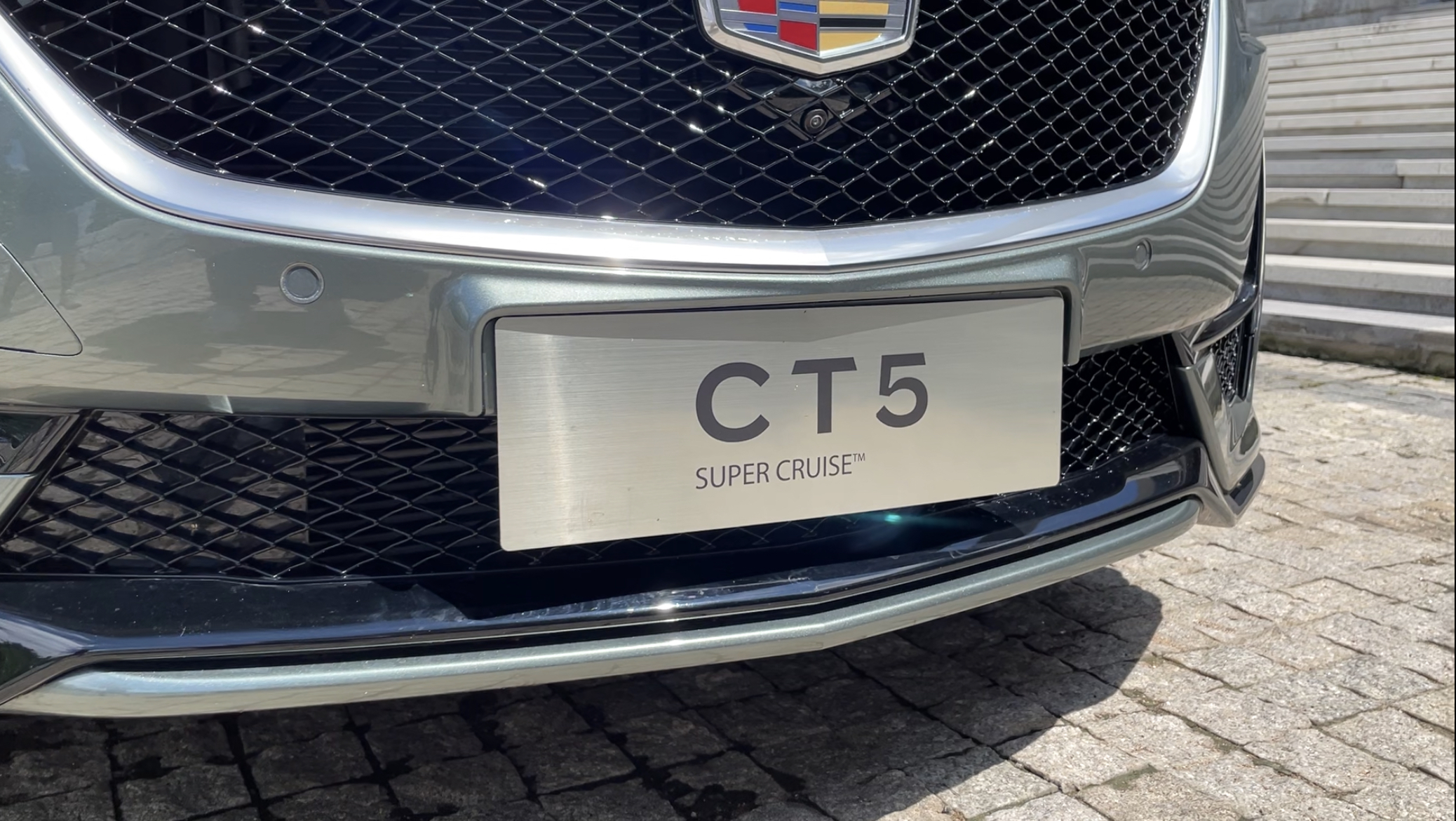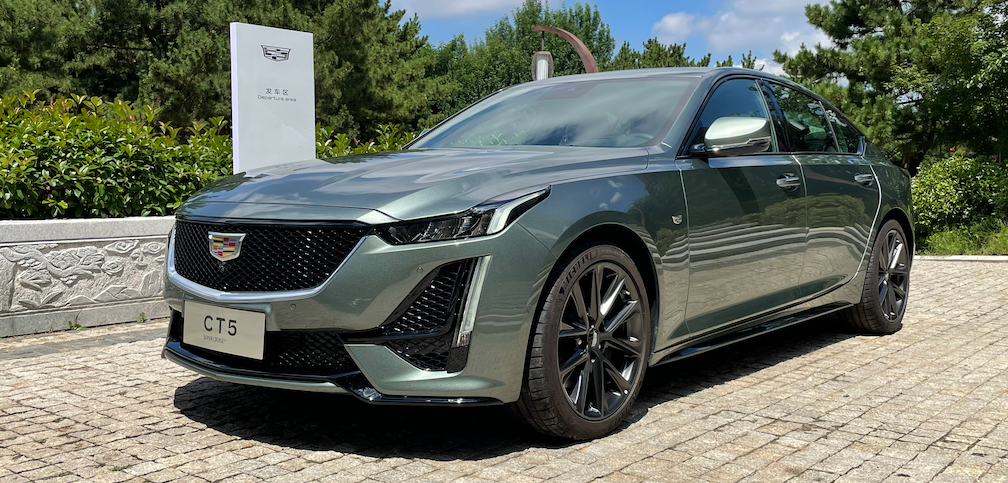Translated English Markdown:
Yesterday, I tried the Platinum Super Cruise version of the Cadillac CT5, driving from Weihai to Qingdao, covering a total distance of approximately 272 km. I used the Super Cruise advanced driving assist system for most of the journey. Here are three advantages and three disadvantages I experienced during this nearly 300 km trip.

Three Advantages:
- Equipped with Mobileye EyeQ4 front monocular vision technology, combined with six millimeter-wave radar sensors located on the left front, front, right front, left rear, rear, and right rear, the overall stability of the advanced driving system is excellent. It handles high-speed turns, large curvature turns, acceleration, and deceleration processes smoothly.

- The driver monitoring system works effectively.
- The green bar displayed on the steering wheel indicates that the Super Cruise system is operating;
- The blue bar indicates that the lateral control has been activated and that it can be resumed anytime after successful identification;
- The red bar indicates that the driver needs to take over immediately. When the status bar is red, the seat vibrates, and various visual and tactile cues remind the driver to take over.
- The new generation of Super Cruise on the CT5 has automatic overtaking capability.
- It can predict and execute lane changes when both the target lanes in front and behind are clear, without reducing speed, rather than simply following a slow car and then overtaking it. With mild traffic conditions, it also accomplishes this by reducing speed by 10 km/h.
- When changing lanes automatically, the seat vibrates correspondingly. For example, if the car is changing to the left, the left side of the seat vibrates; if the car is changing to the right, the right side vibrates. This feature really lives up to the Cadillac name.
Three Disadvantages:
- The visual representation of the advanced driving assist system is quite limited.
- It can’t display the situation of the two lanes on both sides of the vehicle.
- It can’t display the status of the identified leading vehicle, and the indication of the distance to the car ahead is blurry. However, it does highlight the distance being too close in yellow.

- Will actively give up the fast lane.
- When cruising at 120 km/h in the leftmost lane with excellent highway conditions, the vehicle will actively give up the fast lane and automatically switch to the middle lane, just like in Europe and America. If you don’t want to switch lanes automatically, you can simply flip the turn signal lever, and the vehicle will cancel the action and stay in the original lane. However, the car will not automatically give up the fast lane when there is heavy traffic in the slow lane.
- The act of giving way actively has its advantages and disadvantages. Feedback has been given to Cadillac engineers, and it is unknown whether there will be an option to turn it on or off in the future.
- Lacking high-precision maps, LKA is the only feature.
- CT5 Super Cruise can only be activated based on high-precision maps. Without such maps, the system will exit and only provide ACC and LKA. It would be better if visual algorithms could be used to enable the function, even without Super Cruise. However, as of now, Super Cruise has covered 320,000 kilometers of roads throughout China, essentially covering the highways and expressways used by most drivers in their daily commutes.

Overall, the Super Cruise system in the Cadillac CT5 Platinum Edition with advanced driver assistance features has lowered the entry threshold for Chinese customers.
Compared to new start-ups in the auto industry, this system may not have as many features, but its stability deserves recognition, and it also has the added ability to perform automatic lane changes.
We look forward to seeing what the new generation of Super Cruise will be capable of in the upcoming Cadillac LYRIQ.
This article is a translation by ChatGPT of a Chinese report from 42HOW. If you have any questions about it, please email bd@42how.com.
